Especially in recent years, with increasing casualization even on the formal end of the spectrum, Naples has become somewhat of the suit and jacket capital of the world. As such, it’s unsurprising that many brands try to associate themselves with Napoli in their brand name and their marketing materials. Interestingly, it also often comes with prices that just make you want to say, “Mamma mia!” Today we’ll explore if the jackets from Kiton are worth $6,000-12,000 retail price or not.
- History of Kiton, Then & Now – “The Best of the Best, Plus One”
- The Kiton Ethos: Soft, Luxurious, Handmade, Meticulous
- Kiton Jacket Stylistic Hallmarks: Colorful, Casual & Soft
- Kiton Jacket Sizing: Not Very Straightforward
- Jacket Materials: Quality Wool, Cashmere, Vicuña & Solaro
- More About Kiton: Tailoring School & Jacket Assembly
- Hands-On Observations from Cutting a Jacket Apart
- So, Are Kiton Jackets Worth It?
- Outfit Rundown
History of Kiton, Then & Now – “The Best of the Best, Plus One”
Kiton was founded by Ciro Paone, who is from a fifth-generation fabric merchant family in Italy. Paone started a suit and jacket tailoring company in 1956 first calling it “CiPa,” from Ciro Paone. He tried to take advantage of “Il Boom,” which was Italy’s post-World War II economic upswing. At the time, Rome and Florence were more at the center of Italian fashion.
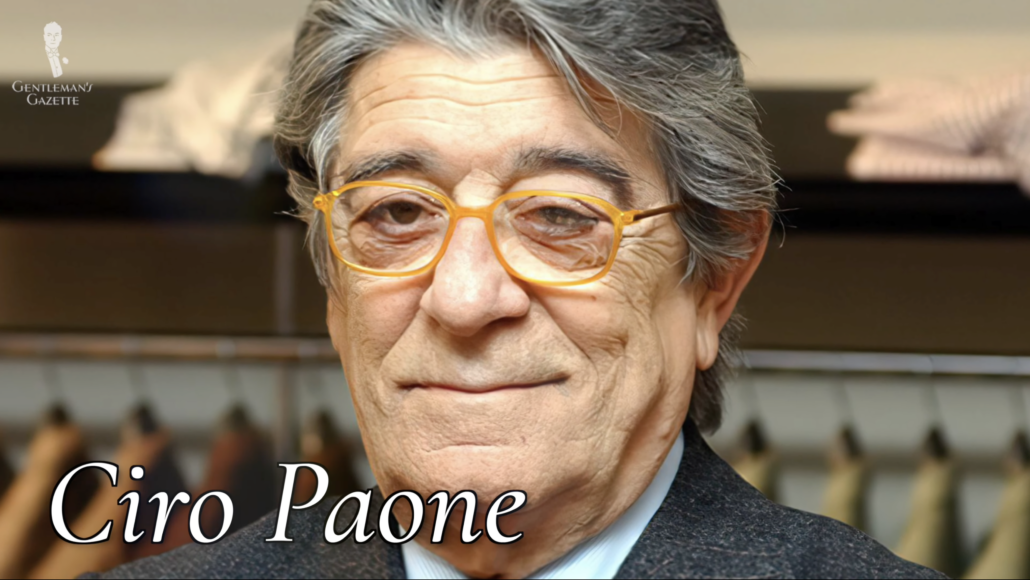
In 1968, Paone intentionally flipped the script and tried focusing on Napoli. He began marketing Neapolitan style as a casual more vibrant yet still stylish alternative. He dissolved his company, CiPa, and created Kiton, which refers to an ancient Greek tunic. Basically, it reflected a Neapolitan culture as a blend of Italy and Greece.
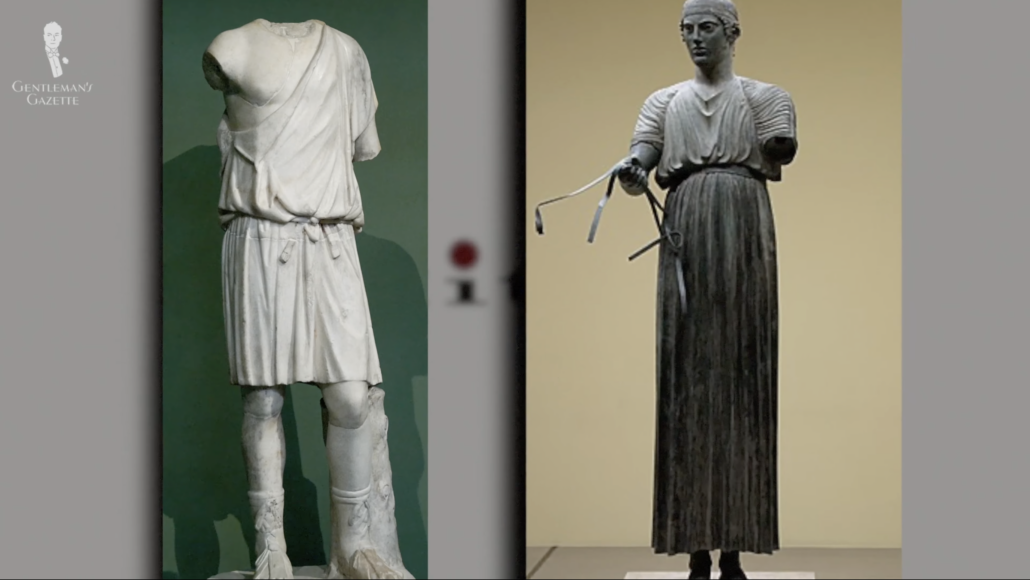
During the 1970s, 1980s, and 1990s, Paone was a driving force behind making Naples a sartorially important town. Because of his charisma, connections, and business sense, he became the leader of that movement. Basically, it was all about highlighting and emphasizing the Neapolitan tailoring tradition. The Italian fashion journalist, Angelo Flaccavento once said, “He was the patron saint of Neapolitan tailoring, in the sense that he gathered all of the tailors in the Naples area and created this whole myth; it was an art in danger of disappearing completely.”
For his contributions to the Italian clothing industry, he received an Order of Merit for Labor in 1999 from the Italian government. Guided by Paone and members of his extended family, Kiton grew very quickly in the 1990s and the first decade of the 21st century. After adding a women’s line in 1995, they rapidly expanded in offering other things; that included denim, knitwear, casual shirts, and accessories, but also stuff like sunglasses or fragrances.
Ciro Paone died in 2021, but he led the company to great success under his personal motto, “Il meglio del meglio più uno,” which translates to, “The best of the best, plus one.”
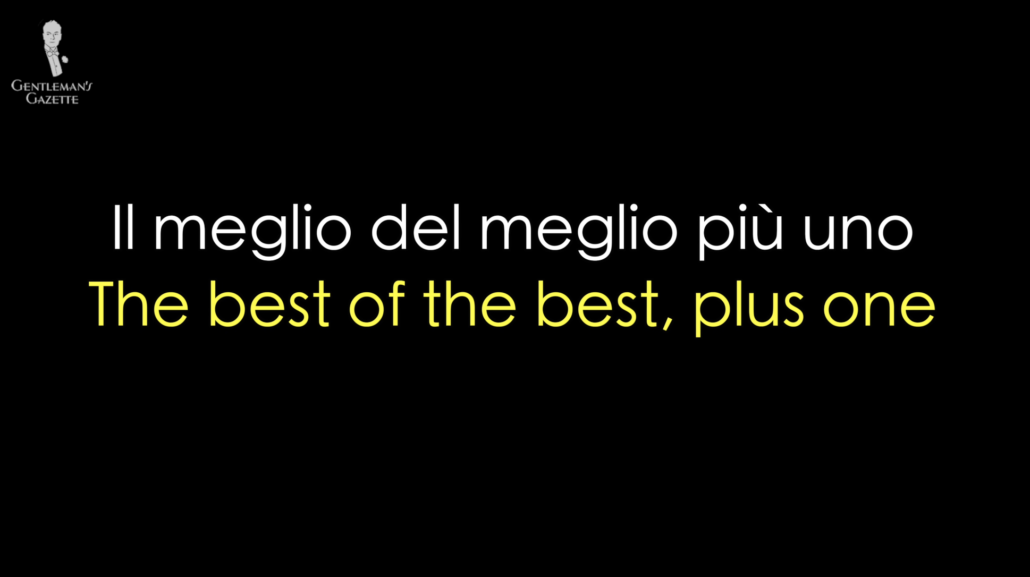
Kiton Today: Five Factories and 800 Employees
In 2023, Kiton operates five clothing factories; they’re located in Collecchio, Fidenza, Marcianise, Biella, and Arzano. Arzano is in fact a suburb of Naples, which is also where the company is headquartered. Kiton also operates 54 boutiques worldwide. In total, it employs about 800 employees, with about half of them directly involved in the making of clothing.
A closer look reveals that to this day, Kiton is a family affair; for example, the current CEO Antonio de Matteis, is a nephew of Ciro Paone. The company’s Vice President and Creative Director of Women’s Wear is Maria Giovanna Paone, who is Ciro’s daughter. The President of Kiton USA is Antonio Paone, who is a nephew of the founder, Ciro.
The Kiton Ethos: Soft, Luxurious, Handmade, Meticulous
So, with that being said, what is the ethos of Kiton, and how are they positioned in the marketplace? They definitely frame themselves as being at the top of the game when it comes to men’s clothing–remember, “the best of the best, plus one.” Kiton is marketed as an exceptionally well-made and handmade garment. The fabrics they use are all rare, super-soft, and ultra-luxurious, and then the whole thing is assembled by skilled craftsmen using heritage tools and traditions.
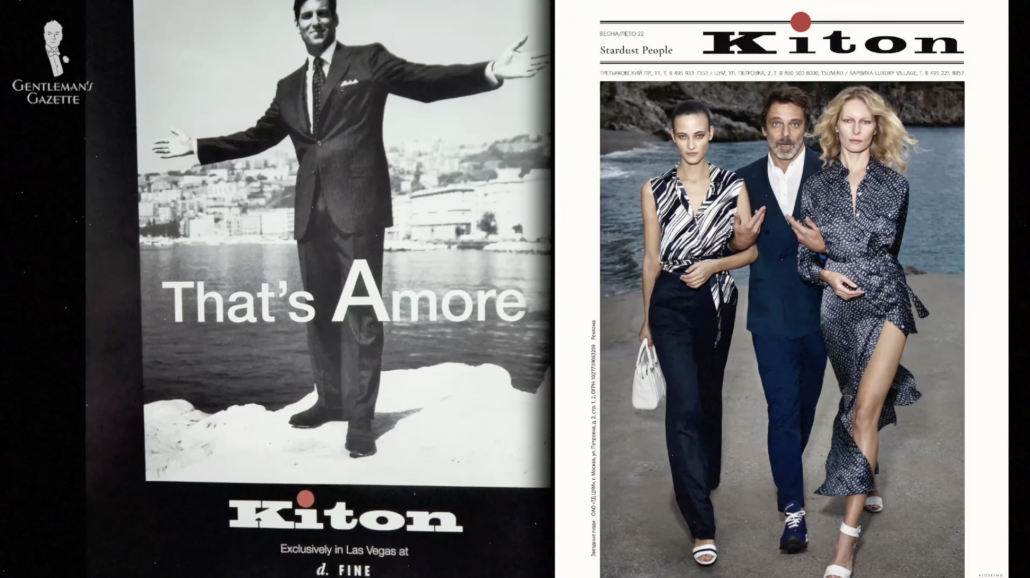
As the current Kiton CEO likes to put it, “I like to imagine our company as a sort of Michelin-starred restaurant. The quality of the product is ensured by the ingredients, the hands that create it, and the eyes that scrutinize it. The quality of the product is the result of meticulous research work. Kiton is all this and more.”
There’s definitely a constant emphasis on the handmade nature of the workmanship, as well as the luxurious materials that are being used. They also try to emphasize a carefree, independent lifestyle that is very much in line with the Neapolitan spirit.
Authentic Neapolitan Suits And Jacket Styles
If you look at the Kiton logo, you see that bright red dot, which is supposed to symbolize the sun shining over Naples. Kiton jackets, sport coats, and blazers often have bolder colors than the average ready-to-wear brand, or more unusual patterns. They definitely have emphasized a more exaggerated and over-the-top look in recent years. In line with other fashion houses, they’ve pushed a more youthful, slimmer, trendy look.
A centerpiece of Kiton’s framing has always been that they use the best materials by the best craftsmen, and therefore their extremely high price of $6,000 and up for a jacket is justified. As they quote Ciro Paone on their website, “You get what you pay for.”
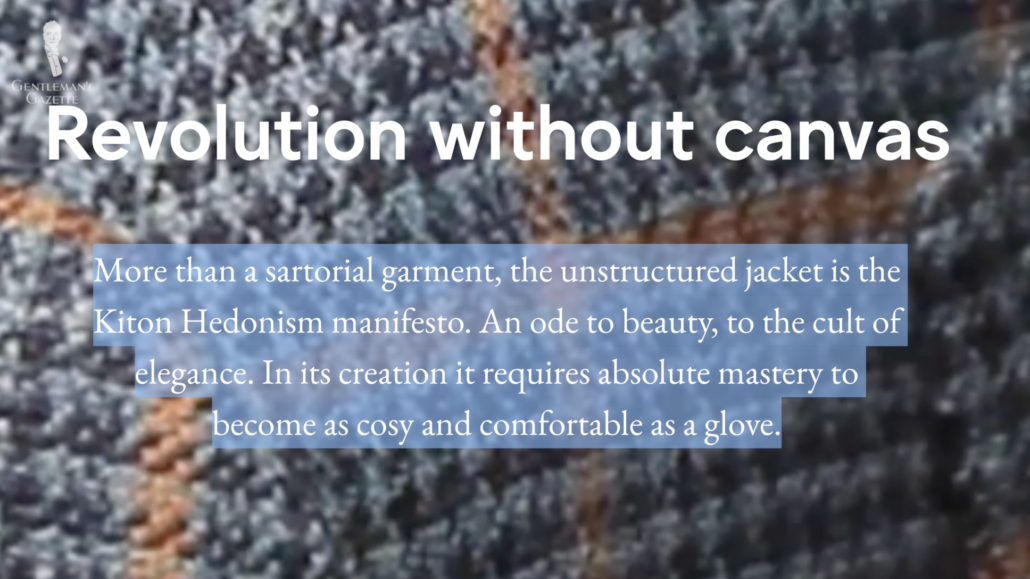
Kiton Jacket Stylistic Hallmarks: Colorful, Casual & Soft
As I said, Kiton offers a wide range of clothing products today; we’ll focus on their sport coats and jackets, because we believe that’s at the core of their brand, and that’s what makes them unique and special. Here and there I’ve seen a tuxedo jacket, but interestingly on their website, there’s no real mention of evening wear–no dinner jackets.
Kiton frames their jackets as being the epitome of the Neapolitan jacket, which means a very soft jacket that is natural and unstructured. They highlight the casual detail and the excellence, paired with the top-of-line materials. If you want to learn more about Neapolitan suit styling in general, you can check it out in this video. Kiton themselves describe the general fit of their jacket as, “a mix of nonchalant elegance and a level of casual with a sporting feel.” It fits like a pullover, following the shape of the body; less rigidity and more relaxation.
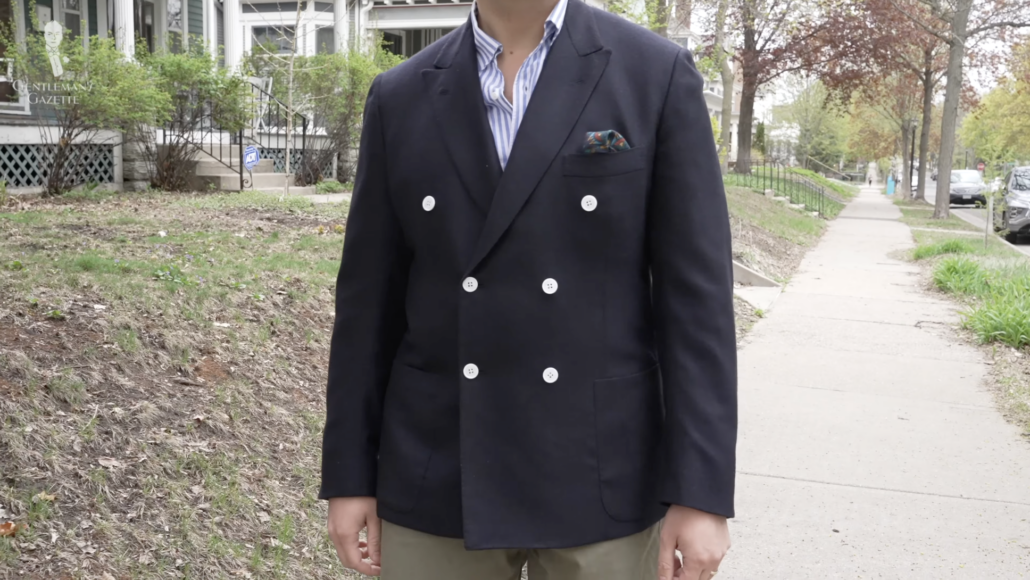
The former Kiton USA President, Massimo Bizzocchi, would usually publicly take the jacket off, bunch it all together, then step on it, then take it apart and put it back on, to show that it didn’t wrinkle–obviously, I had to try that, too, so I balled it up, stomped on it, and put it back on. It doesn’t look that bad! I mean, yes, it shows how naturally the fabric is structured and how it goes back into shape as it should. It’s great to know that you can bring your jacket when you travel, put it somewhere, put it on later, and you don’t have to think about ironing it. That being said, I did the exact same thing with our Fort Belvedere prototype jacket, and it also doesn’t have any wrinkles; I guess we both use quality materials and a soft construction!
One thing that stands out about Kiton and their jackets is the wide range of bold colors, the interesting textures of their fabrics, and the fact that they’re always super soft and comfortable. You get many blues, browns, and grays, but they’re more unusual, and you also have pink, yellow, red, orange, green, and so forth. Kiton is also not afraid of bold patterns, large plaids, even large herringbones, houndstooth, and so forth; they’re all classic patterns with a twist.
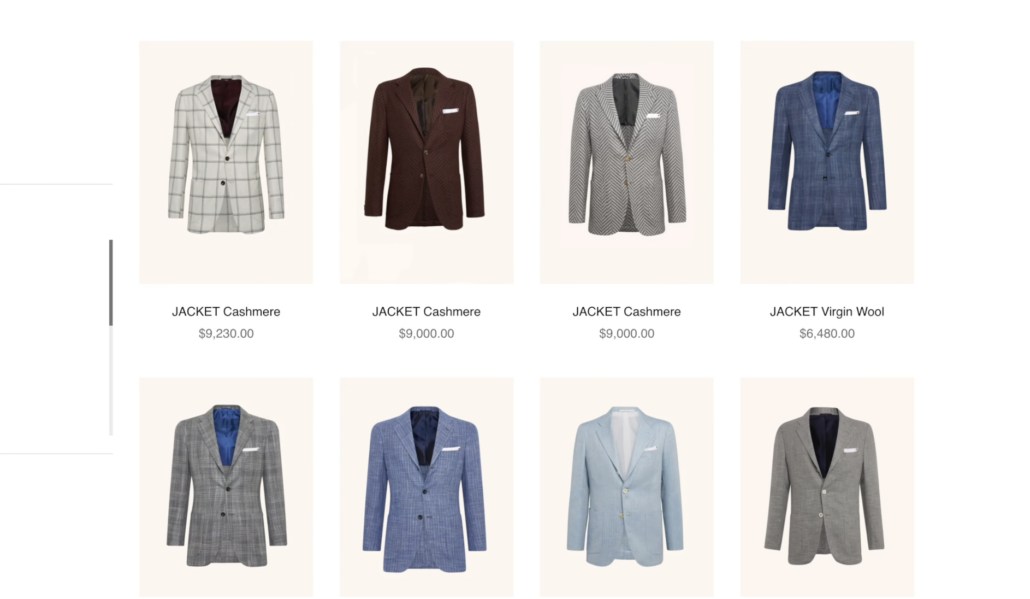
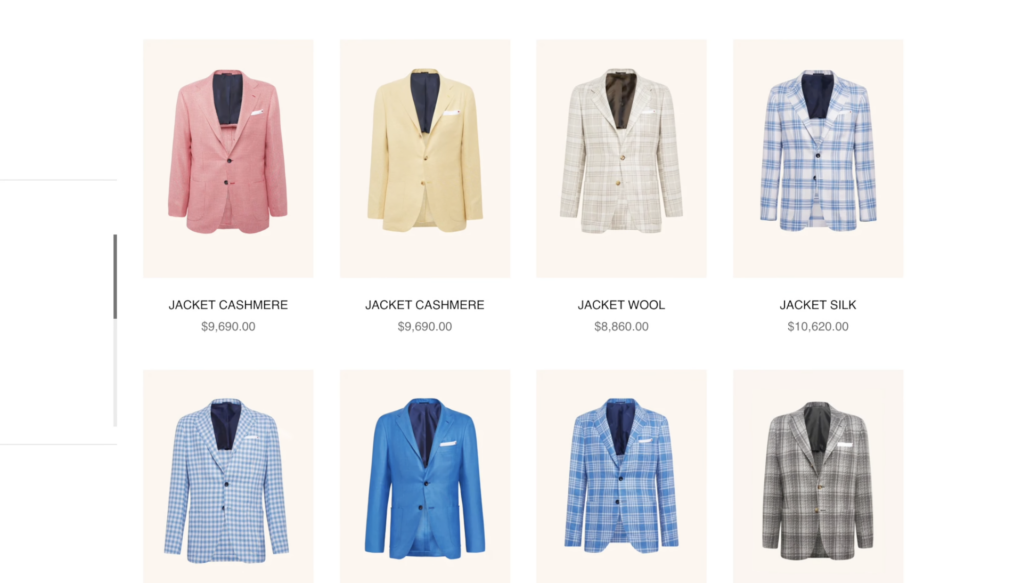
While most of their jackets are single-breasted, you can also get double-breasted jackets, and I remember back in the day, most Kiton jackets had flap pockets that could be tucked in so you could have jetted pockets. Now, in line with most other brands, you see a lot more patch pockets, which are aligned with the more casual trend. Most of the single-breasted jackets are three-roll-two, and they have working cuff buttons. I’ve seen some older jackets that had no vents, but today basically all their jackets have side vents, which is a good thing.
Their linings are made from Cupro or Bemberg, which is a synthetic material, but it’s really great for jacket linings because it’s anti-static, it can absorb moisture, it’s breathable, and it’s more durable than silk, for example, or cotton. It’s also better than polyester or any other material like nylon. So when it comes to linings, Bemberg is truly the best material, and that’s what they use.
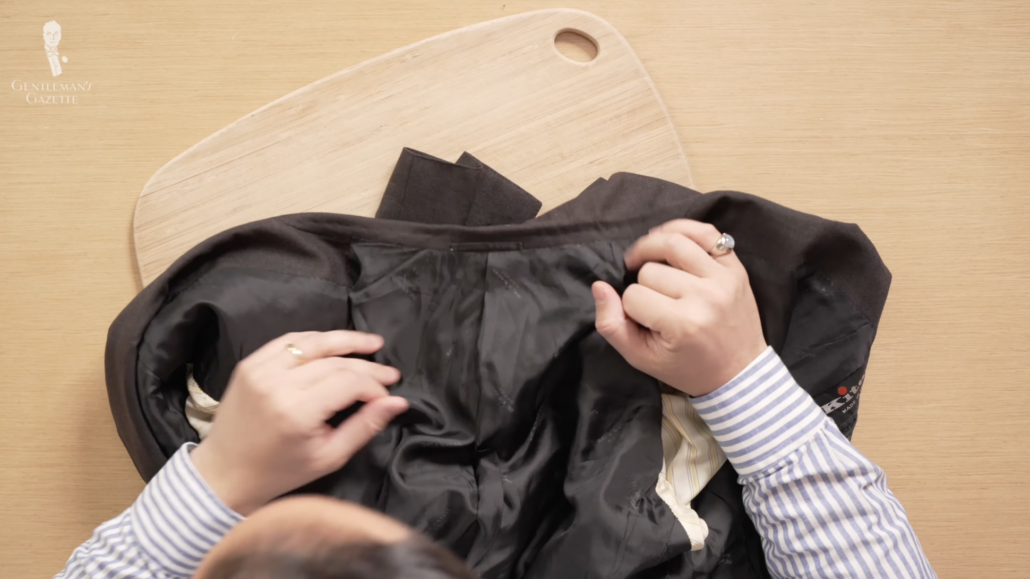
All of their jackets are fully canvassed, which means they’re not glued, but that’s something you should expect at that price point.
Kiton Jacket Sizing: Not Very Straightforward
Regarding their sizing, they use European sizing and often mention the drop. So, as an example, a size 54 in Kiton would be a size 44 in the US. Kiton then also mentions the drop, which is often an “R08” for “Regular length,” or “L” for “Long,” or “S” for “Short,” or 07 or 06. If you have more of a drop, it means there is a bigger drop from your chest measurement to your waist measurement, which gives you more of an hourglass shape. If you have a bit more of a belly, you want less of a drop.
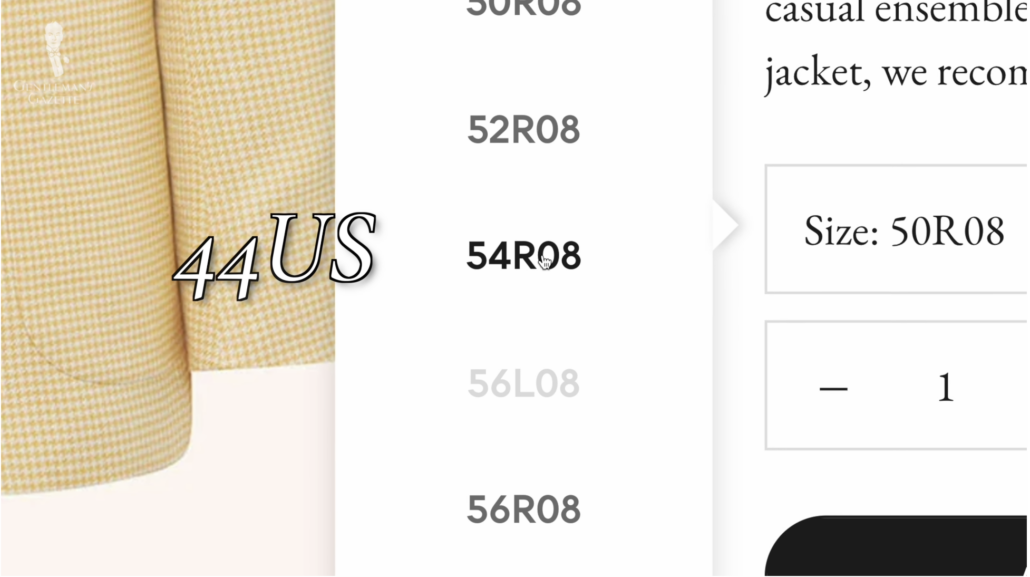
Frankly, though, their sizing has been all over the place; for example, the jacket I’m wearing here right now is a size 58, versus the jacket I cut apart is a size 54, but they’re not that different. Also, I’ve tried other Kiton jackets, and typically they run small, but sometimes you have the exact same size and jackets fit very differently; the length is different, the sleeve length is different. Also the sleeve on top can be very different in its width.
By the way: these days, if you buy a new Kiton jacket, you get a complimentary pocket square, which is nice when you spend $9,000 on a jacket!
Jacket Materials: Quality Wool, Cashmere, Vicuña & Solaro
Now let’s look at the materials, because that’s one of the key selling points that they stretch, and they always say, “It’s the nicest stuff, it’s the best you can get,” and based on my experience, I have to agree! Their materials are all spot-on. You touch them, they’re soft, they’re comfortable, they always feel luxurious. What does that mean? Well, you’re not going to find a scratchy tweed or a thornproof from Kiton. If it looks like it, chances are it’s blended with cashmere, or made of all cashmere and super-soft. Now, that also means they’re not super hard-wearing garments, so if you just have one sport coat, your Kiton coat will probably wear out more quickly than if you get a more hard-wearing Fresco fabric, for example.
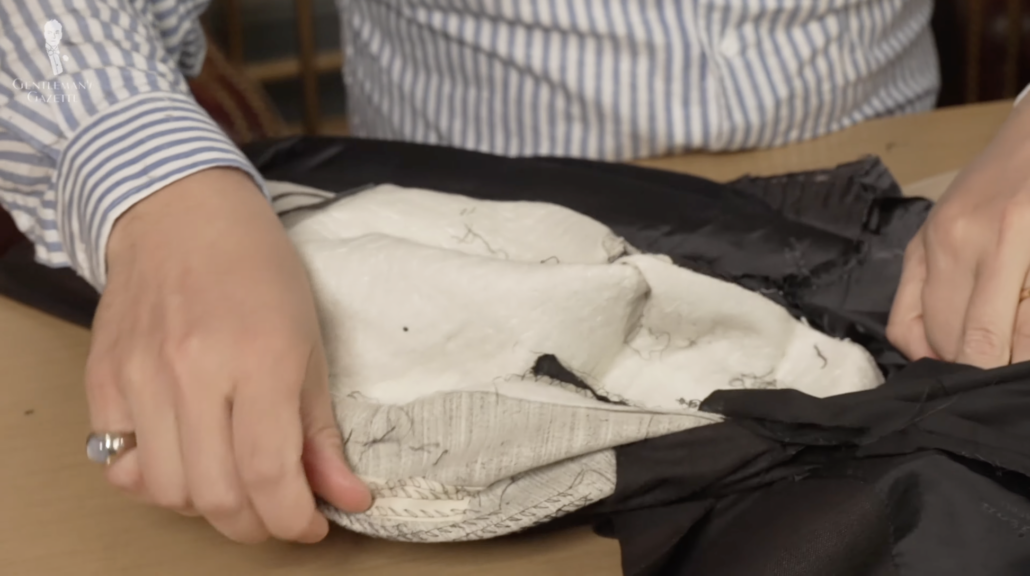
Because Kiton understands that their fabric is really important, they have five separate mills, and Kiton also acquired the Carlo Barbera mill in 2009 for 3.3 million Euro. They’re constantly experimenting with different wool that is smaller in microns, and, therefore softer. They also have vicuña in their lineup, which is the most expensive fiber in the world, and cashmere, but the exclusivity for Kiton means all their fabrics are made for Kiton, by Kiton, and that’s pretty cool.
For themselves, they see the fabric to be the foundation their garment is built on, and based on what I’ve seen, based on what I’ve touched, yes, it is great stuff, especially if you like softer fabrics–and who doesn’t like that? Apparently, they’ve even developed a proprietary method to dye and add patterns to vicuña, for example. They also claim to have a “four-combed yarn,” I would guess they mean maybe a four-ply, which is good for cashmere, but when you touch it you can tell it’s quality cashmere.
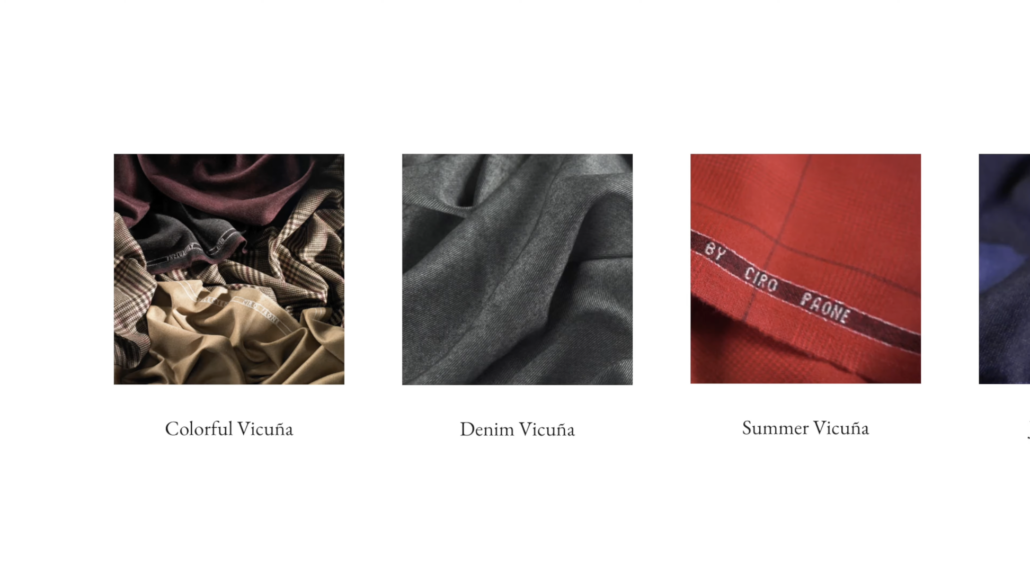
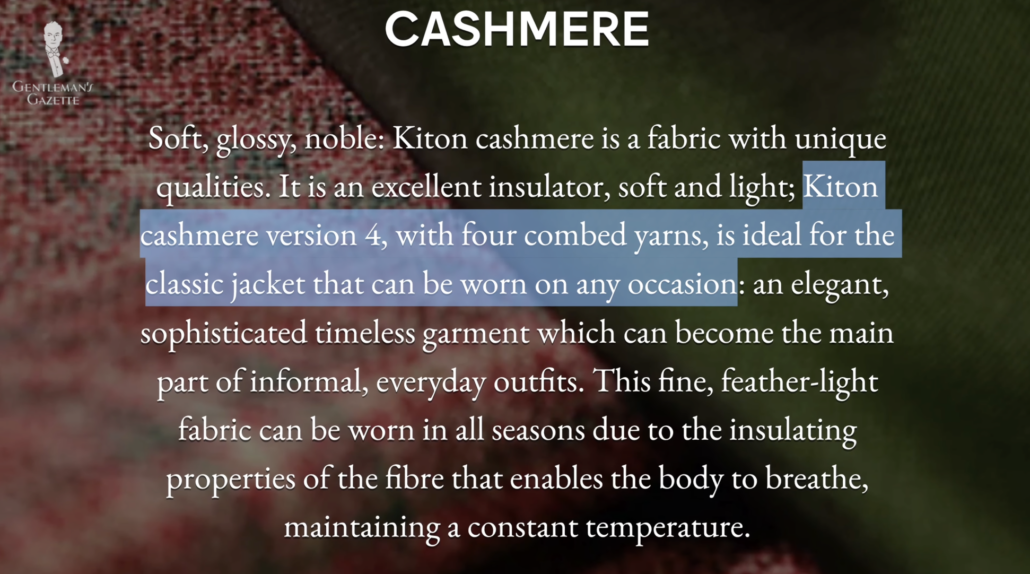
When it comes to wool, they were one of the first that advertised their microns; it used to be 14 microns, now it’s 13.2, or even 12.8. They compare the 12.8-micron wool to vicuña and call it “the thinnest wool in the world.” They also advertise a Solaro fabric that is 13.2 microns in width–and to learn more about Solaro in general, check our other guide here.
Beat the Heat in Style! Summer & Hot Weather Outfits for Men
More About Kiton: Tailoring School & Jacket Assembly
In terms of construction, Kiton also highlights that they really have the highest standards, and to guarantee those standards, they started their School of Tailoring in 2001. There, people receive three years of tailoring training; the first two years are about general tailoring, and then the final year is about doing one production step, with the idea that that person becomes an expert on this one step, and you just employ expert after expert after expert to then create the very best jacket.
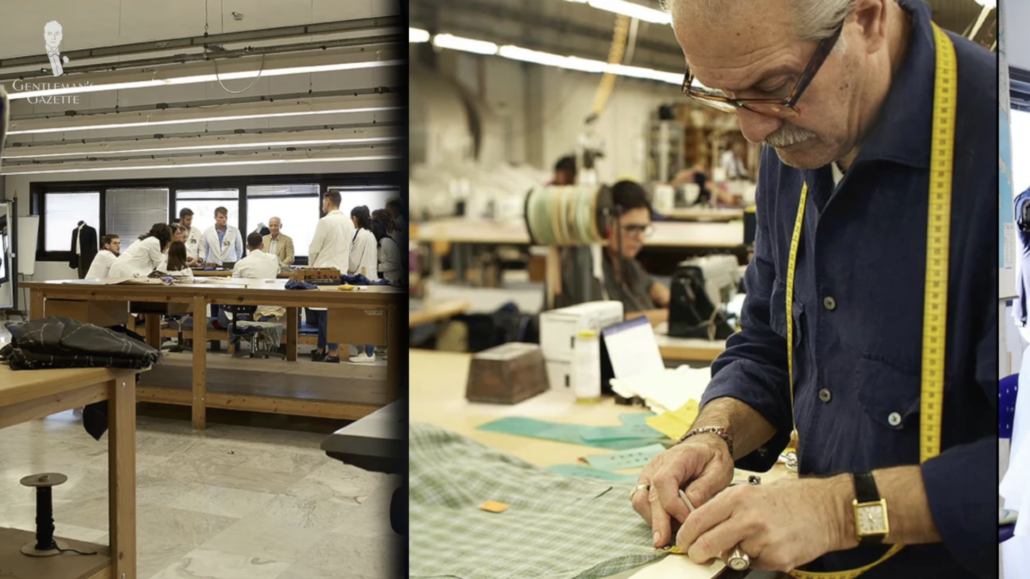
They also assert that the soft, conforming drape can help to avoid fit issues, and I have to say I’ve tried on many Kiton jackets, and they always feel comfortable and non-restricting, which I appreciate. Compared to most other ready-to-wear jackets out there, they feel like you can really move around freely without any restriction or pull. As they claim, “The harmony is provided by the deft touch of the artisan who eliminates, almost as if by magic, any imperfection that all human bodies inevitably conceal.” Frankly, I think the floating canvas helps a lot with that.
According to the Kiton website, a suit has over 1800 production steps and takes 25 hours of labor. At their Arzano factory, they have about 25 tailors and 150 finishers. While many other brands try to tout their technological advances, Kiton is proud of their traditional methods. Apparently, the jackets are hand-cut and tacked without the use of a machine. The curved Barchetta chest pockets are hand-positioned, each buttonhole is sewn by hand, and they’re typically all beautiful. The Kiton buttonhole is typically rather short, especially if you compare it to, let’s say, Anderson & Sheppard, for example.
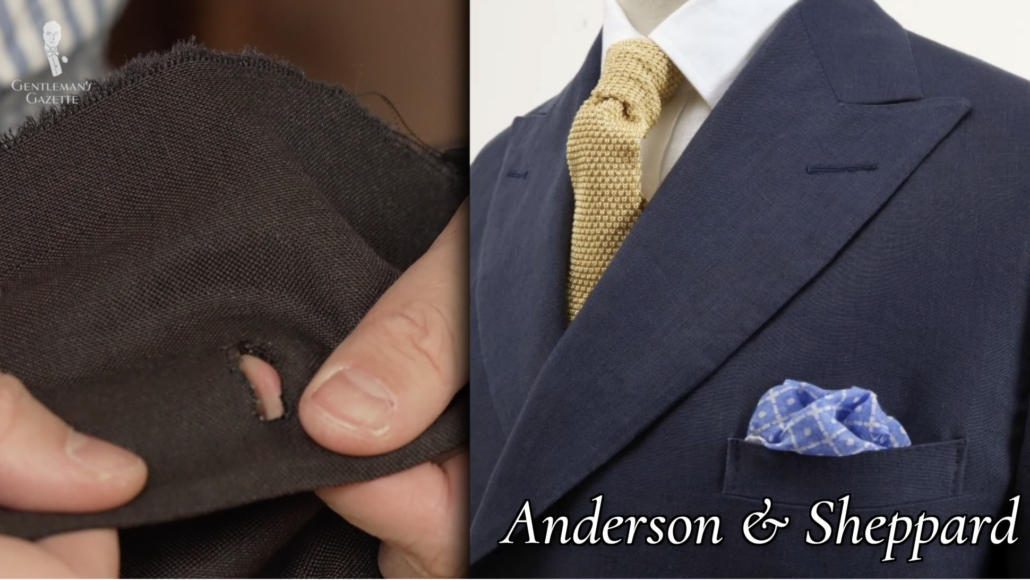
Looking at the jacket, it also seems like all the pick-stitching is done by hand; you can see it by the irregularity of the stitches. Yes, there are now machines that try to pretend to be irregular, so it looks more handmade, but this to me seems like a real, handmade stitch. Overall, I’d say their handwork is less ostentatious than what I’ve sometimes seen in Naples, where you get two rows of pick-stitching that’s quite contrasting; typically, the Kiton jackets that I’ve seen are rather quiet and have a single row of stitching, much like you’d find in Germany or England.
They also do a neat job on pattern-matching, and they use good, old-school, eight-kilogram irons, which are about 17.6 pounds–can you imagine moving such an iron around? Well, that’s how you get that nice drape, and you can really give cloth a certain shape that you want it to take.
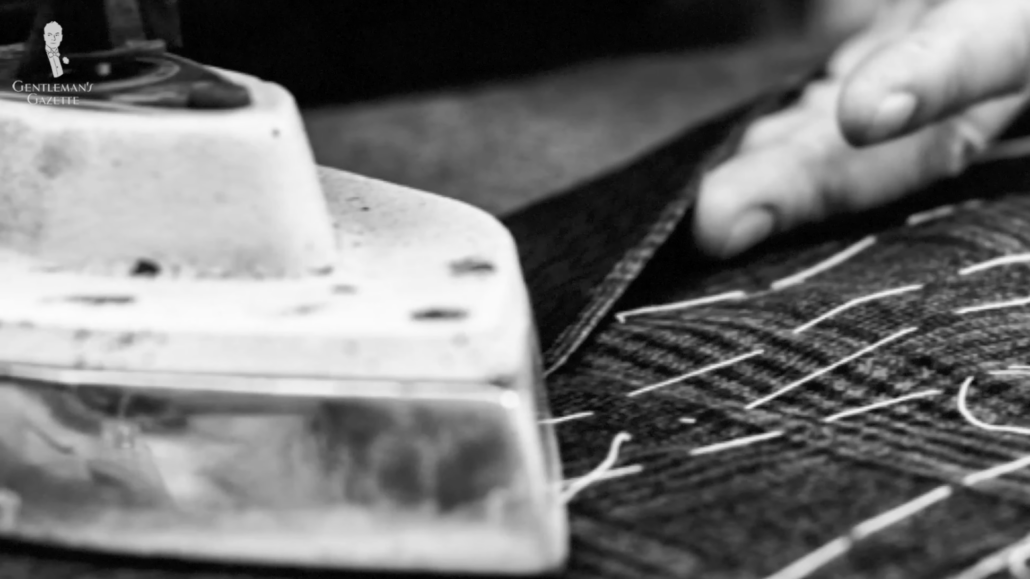
Hands-On Observations from Cutting a Jacket Apart
Of course, marketing can always sound great, so I just bought a secondhand jacket and cut it apart. First, I removed the lining at the top, ripped it open, and I could see the shoulder pad and the full canvas. As you can see, the stitching on the padding is very regular, which means it’s a machined stitch.
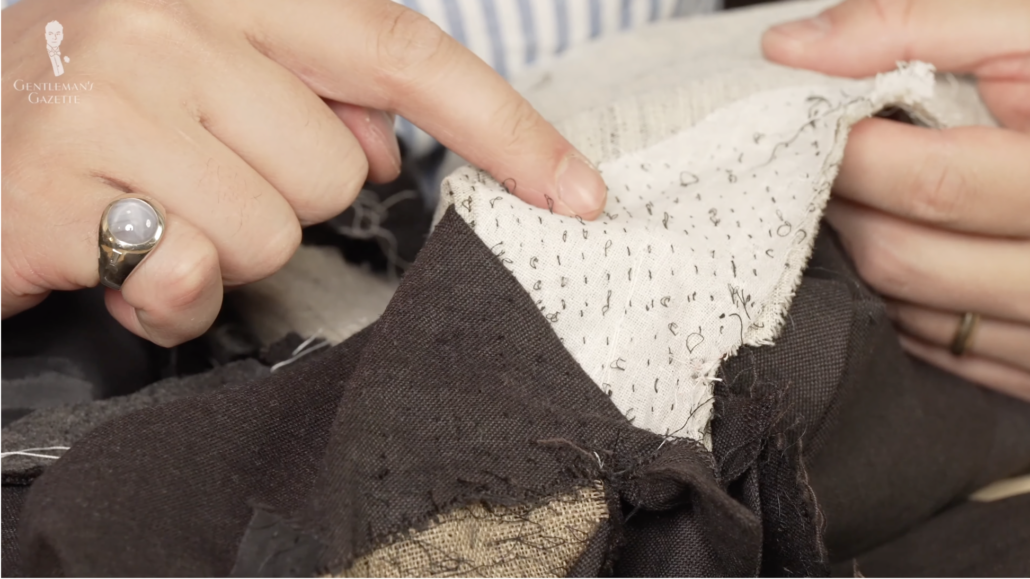
Then, if you look at the canvas, it’s a clear sign of a Strobel machine, which is a great machine; there’s one for the left lapel and one for the right lapel, and they sew everything together so you get that nice lapel roll and curve that is constant. You can either do this by hand, which takes a lot of time, or you can do it by machine, which saves a lot of time. The effect is the same, so by using a machine, it doesn’t make the jacket worse, but it takes less time. I was surprised to see that, because for the price of $6,000-12,000, I would have expected for it to be all-handmade.
Then again, if you look at other parts of the jacket, like the collar for example, it’s also padded by machine, not by hand. Clear evidence of handwork were the buttonholes, of course, and the pick-stitching, but all the other straight lines, as you can see, they’re all done by machine. At the hem, for example, you can see that only the pick-stitching is handmade, then there is a more regular stitch that is machine-made, and another regular stitch that is machine-made.
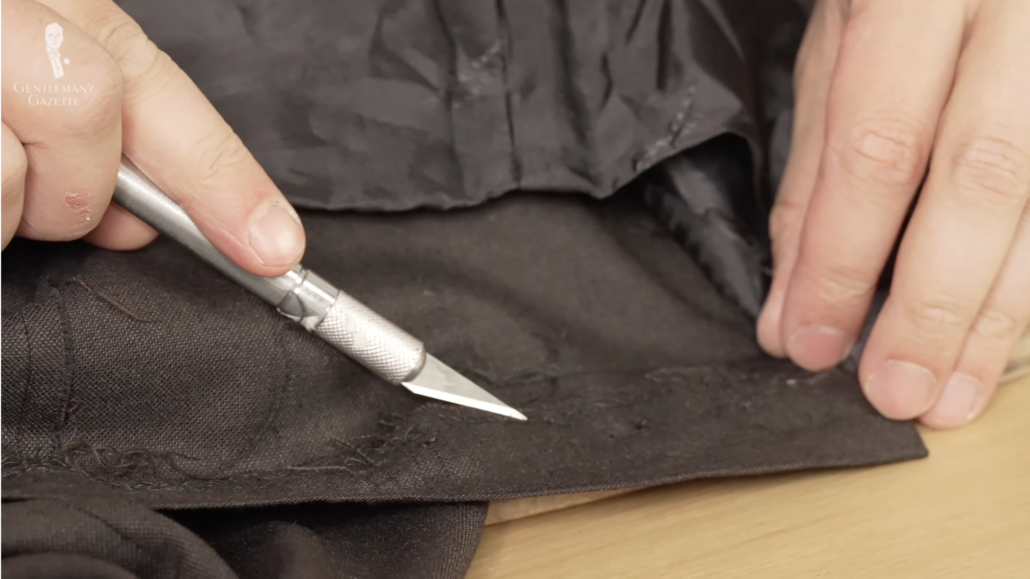
Yes, the pieces may be cut by hand, and you can see they’re taped in the areas where they need extra strength, such as your sleeve hems or the part around your vents. Yes, it is a fully canvased jacket, which is a good product, but you can find many fully canvassed jackets from other companies, too, that use a Strobel machine; that’s nothing super special. In the grand scheme of things, there are of course a lot more glued jackets out there, and you get a quality jacket with Kiton, but it is not this purely handmade jacket that they kind of make it out to be.
The Jacket I’m Wearing vs. the Jacket I’m Cutting Apart
Today, I’m wearing a 100% cashmere jacket, which currently on their website would go for around $10,000-11,000. I think I paid two percent of that price on eBay, and if you want to learn how you can score bargains, you can check out our shopping guide.
How to Get 80% Off Menswear Every Time: My Secret Step-By-Step Process
Frankly, this was hardly ever worn, basically like brand new; someone just bought it and just didn’t wear it–good for me! I like that it has contrasting, mother-of-pearl buttons, as well as patch pockets. The lapels are a bit on the slimmer side, and typically Kiton lapels traditionally were wider, so I don’t know if that was just a fluke or a more modern style, but I think I prefer slightly wider lapels.
I’ve definitely tried on many other Kiton jackets before, but I like that on this one, the upper sleeve was rather wide–which, when it isn’t, feels quite uncomfortable. Again, there’s really no way to know what the sleeve feels like unless you put it on, or you know the exact measurement. In terms of construction, you can see it has more of a Neapolitan sleeve head with a few wrinkles, called grinze, and that’s okay; if you like that, you can get it from other companies. Personally, I like a somewhat roped shoulder more, and I’ve seen older Kiton jackets that also had roped shoulders.
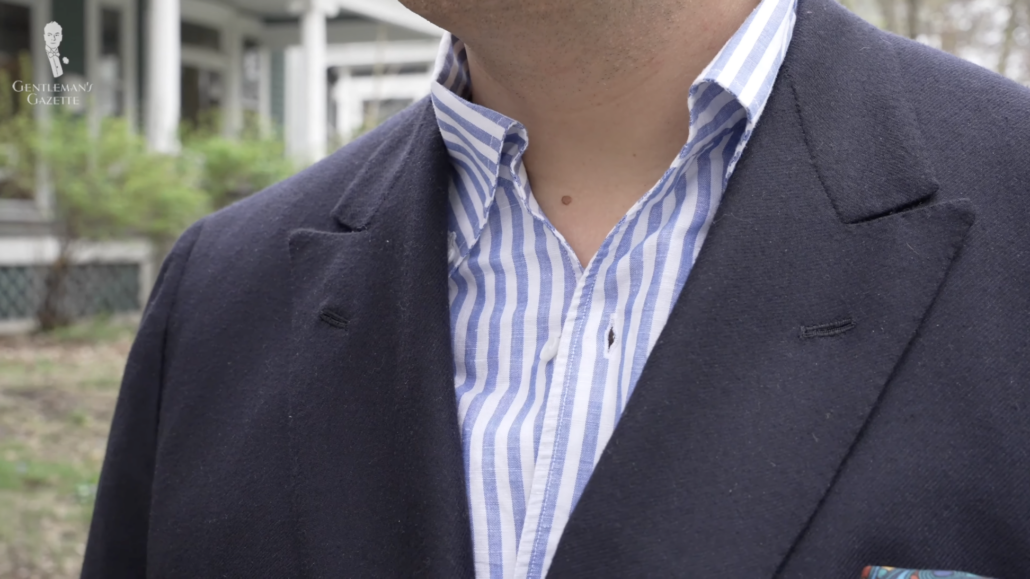
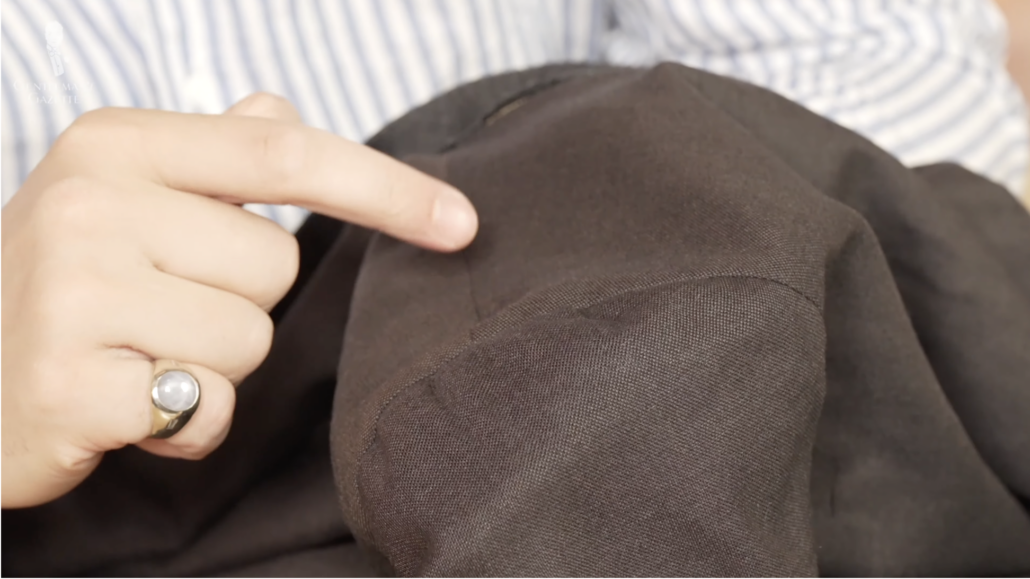
Let’s see if this jacket also passes the “Bizzocchi Test”–and sure enough, it does, but again, so does our Fort Belvedere prototype jacket. I think this is not something that is only exclusive to Kiton.
So, Are Kiton Jackets Worth It?
So now, the big question: is a Kiton sport coat really worth its money? Now, on the product side, you get a quality product that is well thought-through and well-designed; for example, with the lining, there is a little bit of a reserve in your top shoulder to make everything more comfortable, and I think that’s a good thing. Yet the interiors of the jackets are largely made by machine–yes, someone may operate the machine, but all the padding of the lapel and the collar, for example, is done by machine. There’s nothing wrong with it, it doesn’t decrease the quality, but it doesn’t justify the price that they’re asking, at least in my opinion.
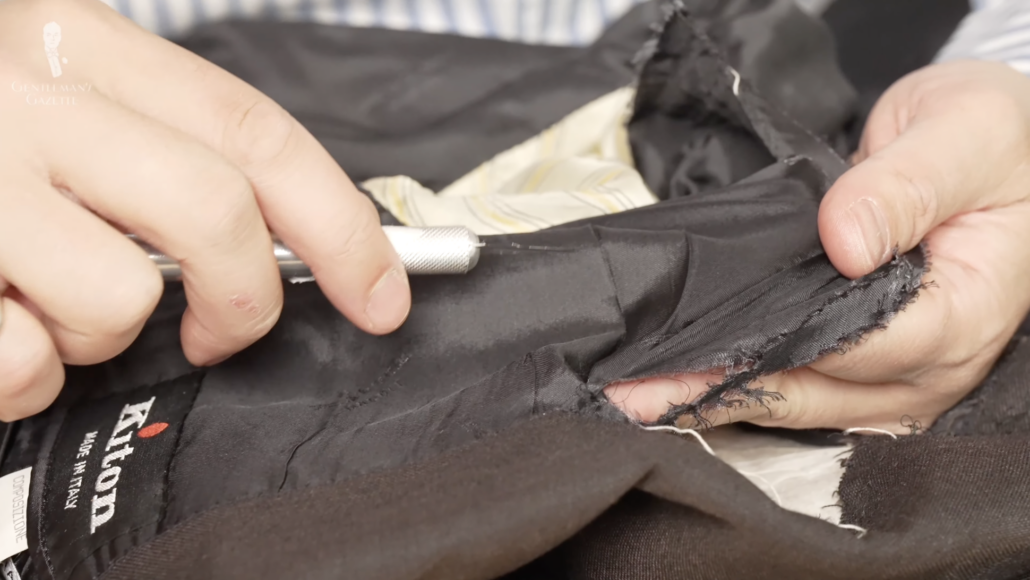
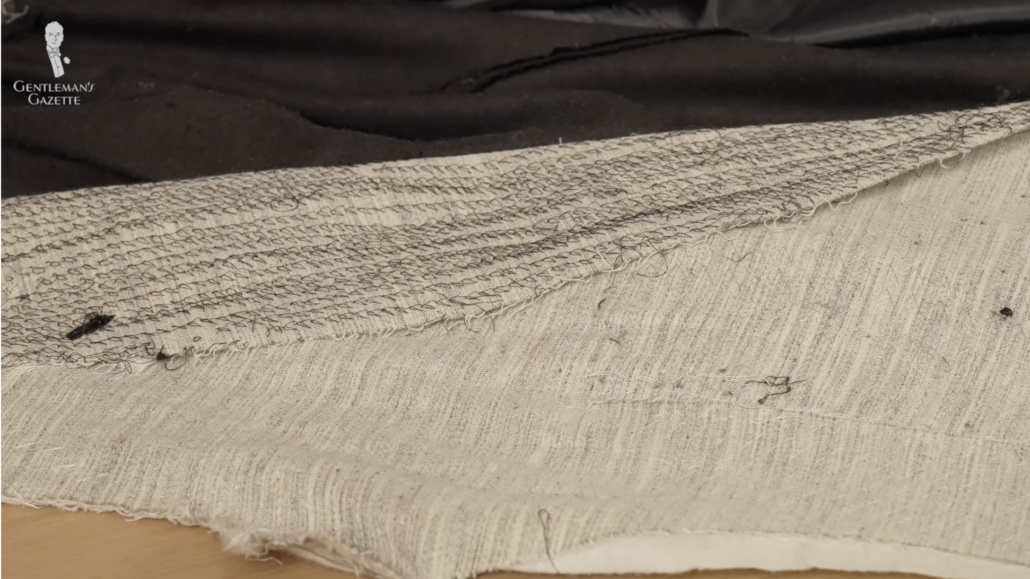
What I really like about Kiton jackets are the range of movement and the softness of their fabrics; they always feel luxurious. I’m also a fan of their bolder patterns and colors, and think it makes them stand out from the crowd. Obviously, they control everything from their labor pool to their fabrics, and that is quite a feat; I think if you compare it to other companies, I probably prefer Kiton to Brunello Cuccinelli. It definitely feels like the fabrics are more luxurious than Isaia. In terms of construction, I would say they’re somewhat on par. Also, I think Brioni’s fabrics are not quite as nice as the ones you get from Kiton. In the past, I also had some Kiton suits with pants; they’re more of a regular rise and not an actual high-rise pair of trousers, which is what I prefer overall.
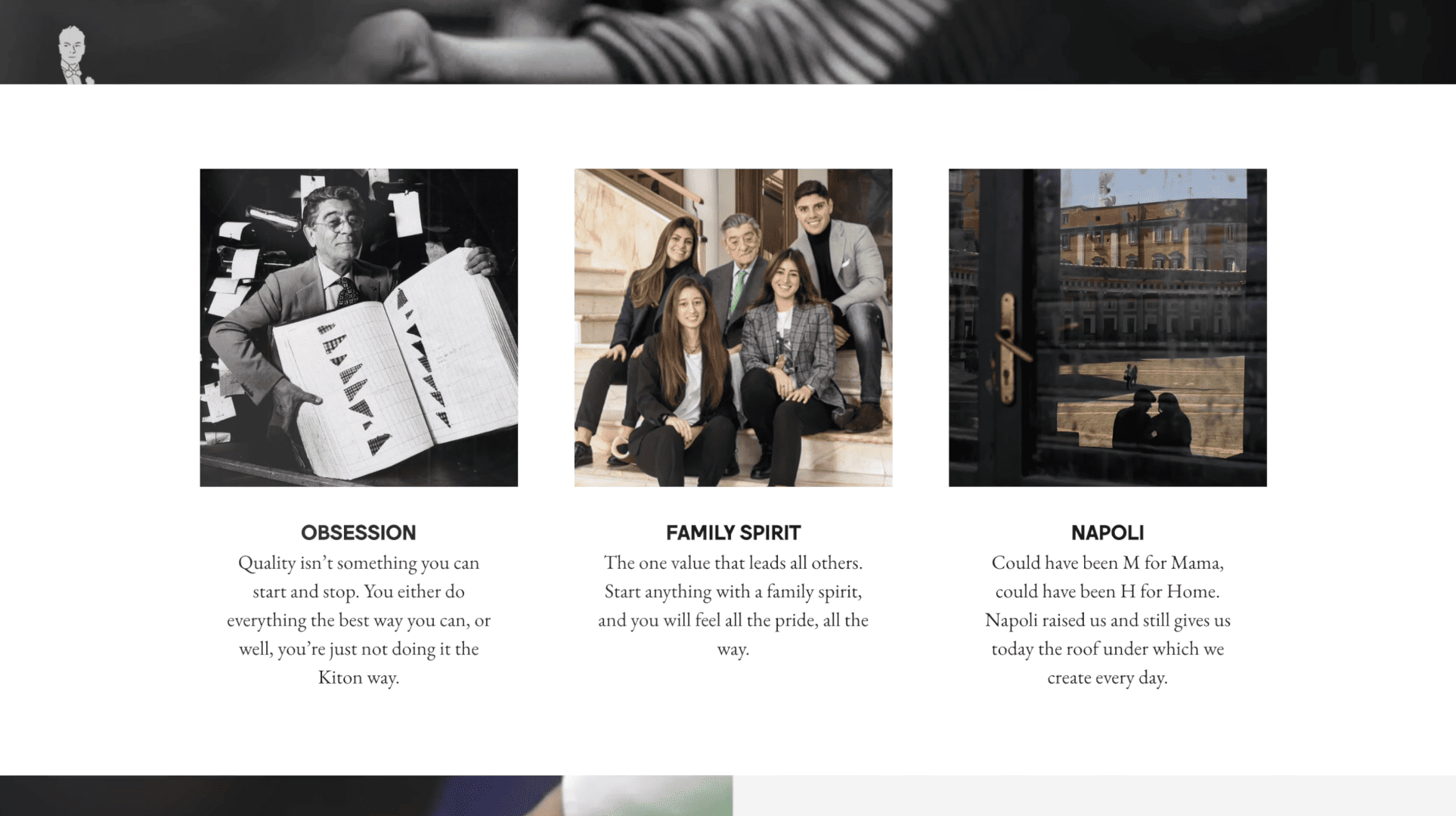
In terms of quality, I think Kiton jackets are some of the most comfortable ready-to-wear garments I’ve ever put on, and it’s consistently the case. Their fabrics are second-to-none. So, would I buy this at retail price? Absolutely not, I’d never do that–I’d go to a bespoke tailor or go to a made-to-measure company, perfect my pattern in the right fabric. I could do that three, four times, and by the fifth time, it would be absolutely perfect, so the fit would be better or as good as what I can get from a Kiton jacket. The material will maybe not be 100% there, but maybe 99, 98% there, and I pay less going forward.
On the flip side, if you want a “what you see is what you get” approach and you like their style, you can put it on, you can see how it feels, and you don’t have to waste time traveling back and forth to your tailor; then it might be an attractive option. That being said, if you can find Kiton jackets either on sale or on eBay, what I’ve found is that a lot of Kiton jackets are never worn out, even though the material is all so luxurious, it seems like the buyers have enough money that they can buy multiple jackets, only wear them a few times, get bored of them, and move on to the next one, which can be great for you if you’re okay with having a gently used garment. Sure, if money is of no concern to you, it would be a lot of fun to probably just buy those jackets left and right, wear them once, and just give them away, but as Ciro Paone said himself, “The greatest virtue of Neapolitans is the art of making do.”
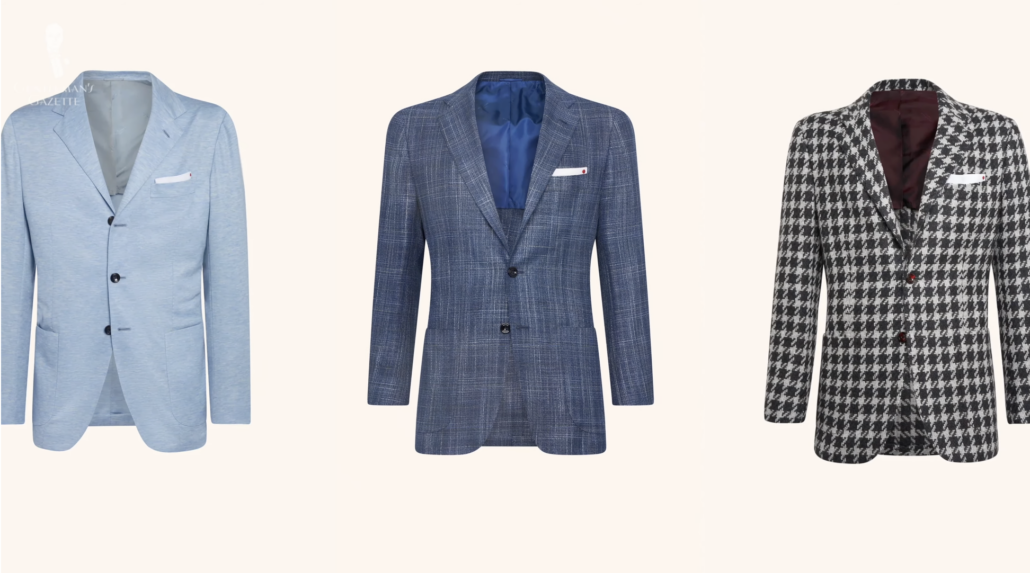
Outfit Rundown
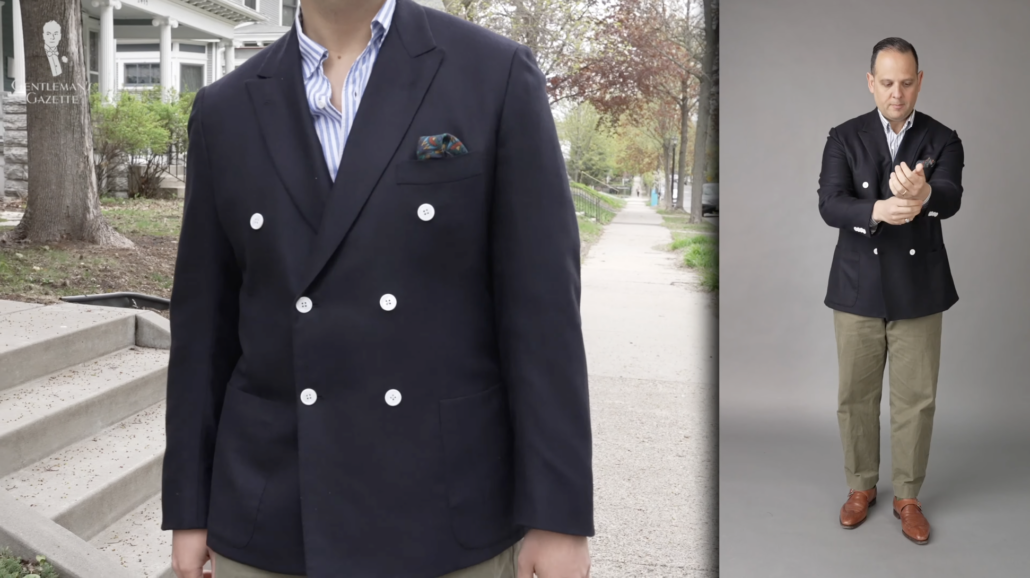
In today’s outfit, I’m wearing this Kiton navy blazer made of 100% cashmere and in a six-on-two button configuration with patch pockets. I’m combining it with a white and blue striped shirt that is designed to not be worn with neckwear. My pocket square is an Art-Nouveau-inspired print on silk wool from Fort Belvedere, and you can find it in our store, just like the pair of green and brown socks I’m wearing; they parallel with my greenish chinos, which are a prototype that we’re testing right now.
My shoes are from Crockett & Jones; they have a wingtip with broguing and a silver buckle, from the Handgrade line. Matching the shoe buckles, I have a white gold ring with a Star Sapphire and baguette diamonds on the side. Today’s fragrance is Derby from Roberto Ugolini, who is also a bespoke shoemaker who loves cologne. It’s a very strong, intense cologne it’s an Eau de Parfum with 20% oil concentration, and you can learn more about it here.
Roberto Ugolini Fragrances
Do you own any Kiton jackets, and if so, how would you compare them to other brands? Let us know in the comments!
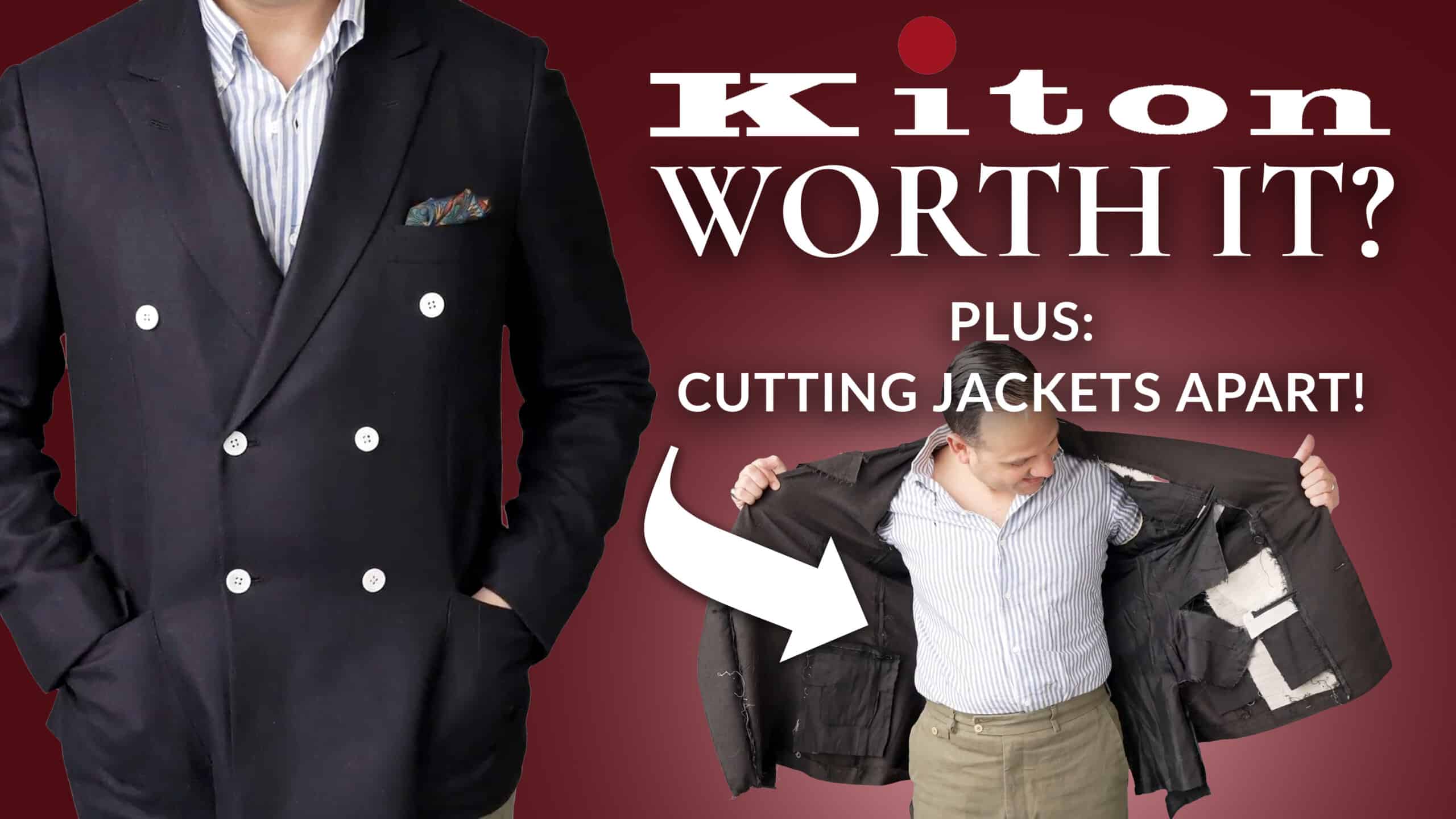

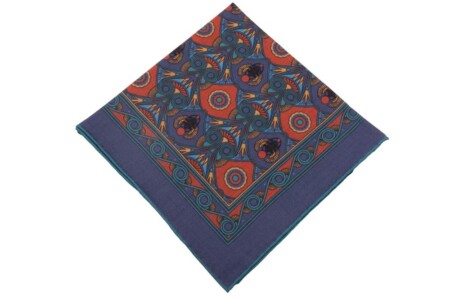
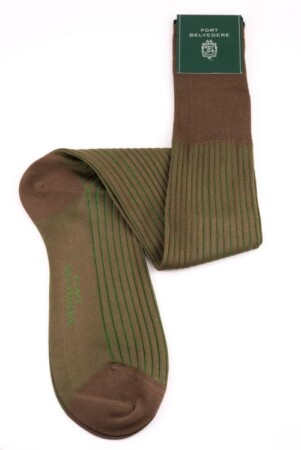
A gentleman does not wear second hand clothing
Touche!
Thanks for commenting, Harold. We champion quality, and help people spot quality in their clothing choices. So whether something is new or previously used, we firmly believe that clothing shouldn’t go to landfill if it is stylish, made well, and brings joy to whomever wears it.
On the stitching thing—I’m a proponent of doing buttonholes, pickstitching, padstitching, basting the canvas in, & shoulders by hand. It’s tedious work, but the ability to hand-shape the darts & lapel is invaluable. That said, most of the structurework in collars & chest pieces is better done by machine in my opinion for both time & efficiency reasons. I really enjoy padstitching lapels myself—it feels like making something come of nothing (or, at least, very little.